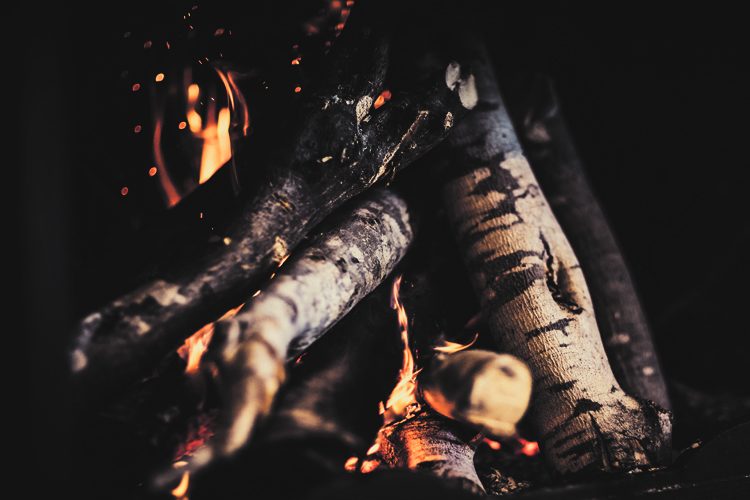A wood-burning fireplace has its own unique set of advantages and disadvantages. Here’s a detailed look at both:
Advantages of a Wood-Burning Fireplace:
- Traditional Ambiance:
- Aesthetic Appeal: Wood-burning fireplaces provide a rustic, cozy atmosphere that many people enjoy. The crackling sound of the fire and the natural smell of burning wood can enhance the overall ambiance of a room.
- Visual Appeal: Real flames, along with the glowing embers, give a natural warmth and charm that many people find irreplaceable compared to gas or electric alternatives.
- Renewable Fuel Source:
- Sustainability: Wood is a renewable resource when harvested responsibly. If you have access to firewood (or live in an area with woodlands), this can be a sustainable heating option.
- Carbon Neutral: When burned properly, wood is often considered a carbon-neutral fuel, meaning it releases the same amount of CO2 that the tree absorbed during its lifetime.
- Cost-Effective (Depending on Availability):
- Lower Fuel Costs: In some regions, firewood is less expensive than gas or oil. If you have access to your own wood or are able to purchase it in bulk at a reasonable price, a wood-burning fireplace can be cost-effective.
- Independent of Utility Providers:
- Off-the-Grid Heating: Since wood doesn’t rely on electricity or gas, it’s an excellent option for those who live in rural areas, are looking for emergency heating, or want to reduce reliance on utility companies.
- Efficient for Heating Small Spaces:
- Effective Heat Source: Wood-burning fireplaces can provide a significant amount of heat to a small area, making them useful for heating a specific room or space, especially in the colder months.
- Potential for Cooking:
- Multi-Purpose: Some wood-burning fireplaces, especially those with an open hearth or an attached oven, allow you to cook food over the fire, adding a unique experience to outdoor or indoor living spaces.
Disadvantages of a Wood-Burning Fireplace:
- Air Pollution and Emissions:
- Environmental Impact: Burning wood produces smoke, particulate matter, and other pollutants, which can negatively impact air quality both indoors and outdoors. It can also contribute to respiratory problems if ventilation isn’t adequate.
- Climate Change Impact: While wood can be considered carbon-neutral, improper combustion (such as in an old stove or fireplace) may release more carbon than it should.
- Maintenance and Cleaning:
- Chimney Maintenance: Regular cleaning of the chimney and flue is required to prevent the buildup of creosote, which can lead to dangerous chimney fires.
- Ash Disposal: After burning wood, you will need to dispose of ashes, which can be messy and require periodic cleanup.
- Regular Upkeep: Wood-burning fireplaces require more maintenance compared to gas or electric models, such as ensuring the firewood is dry and storing it in a proper place.
- Labor-Intensive:
- Firewood Storage and Handling: You need to store firewood and ensure it’s properly seasoned (dried). Collecting, chopping, and stocking wood can be time-consuming and physically demanding.
- Lighting the Fire: Starting a fire, managing it, and maintaining the right wood temperature requires attention and effort. This is more hands-on than the push-button convenience of gas or electric fireplaces.
- Efficiency and Heat Loss:
- Lower Efficiency: Wood-burning fireplaces are generally less efficient than gas or electric alternatives. Much of the heat produced escapes up the chimney, leading to wasted energy and heat loss, especially with older models.
- Uneven Heating: Unlike gas or electric heating systems that can provide steady, consistent warmth, wood-burning fireplaces often create uneven heating. The room may become very hot near the fire but colder as you move away.
- Safety Hazards:
- Risk of Fire: Wood-burning fireplaces pose a greater fire risk if they are not properly maintained. Sparks can escape the fireplace and ignite nearby combustible materials.
- Indoor Air Quality: Poor ventilation can lead to smoke and fumes entering the home, which may cause discomfort or health risks, particularly for individuals with asthma or respiratory issues.
- Not Ideal for Large Spaces:
- Limited Heating Area: A wood-burning fireplace might not be powerful enough to heat large areas or multiple rooms effectively. It’s often used more for ambiance and localized warmth rather than as a primary heat source for the entire home.
- Time-Consuming to Set Up:
- Fire Preparation: Building and maintaining a wood fire takes time and effort compared to simply flipping a switch or adjusting a thermostat on gas or electric fireplaces.
Conclusion:
A wood-burning fireplace provides a traditional, cozy atmosphere and can be a cost-effective, renewable source of heat, especially in areas where firewood is readily available. However, it requires more maintenance, involves handling and storing firewood, and can contribute to air pollution if not managed correctly. It’s best suited for those who appreciate the experience of building and maintaining a fire, have the time and space to manage it, and are prepared for the cleaning and safety responsibilities involved.
FIREPLACE INSTALLATION PHOENIX & CHANDLER, ARIZONA
If you live in Chandler, or surrounding cities in the Phoenix, Arizona area and want a gas fireplace installed; Diversified Builder, Inc. can help! We offer indoor and outdoor fireplace installation in Phoenix & Chandler, Arizona. We also install commercial and residential brick veneers. Contact us Today!





